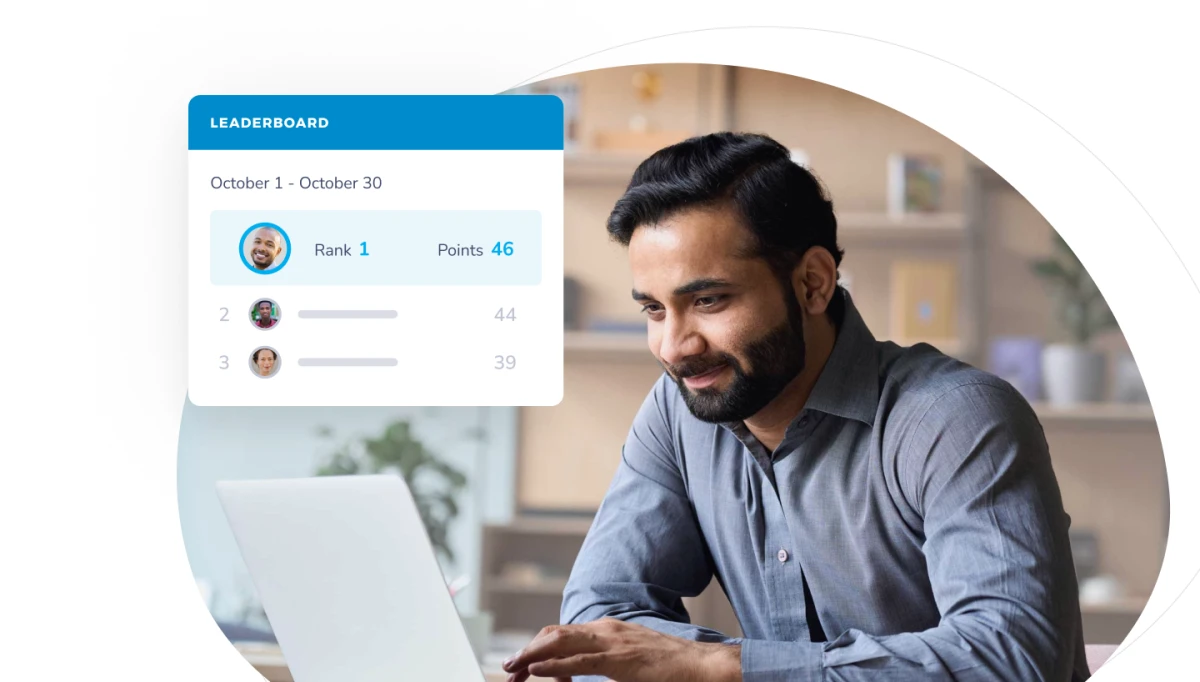Compliance training makes up 12% of an organization's learning programs, according to the "ATD 2018 State of the Industry" report. Unfortunately, according to Brandon Hall Group's "2017 Compliance Training Survey," only about one-third of companies say those training efforts are effective. Given busy schedules and competing priorities, learners may put off these courses until the completion deadline is breathing down their necks—and then they might not perform at their full capacity. One way to increase interest in compliance requirements is through gamification techniques. Gamification offers a powerful way to motivate competition and reward learners for their training achievements. For example, depending on their accomplishments, learners might earn badges, points or rewards or level-up on a leaderboard. These gamification methods create a healthy dose of competition to not only meet requirements, but also engage learners around these important topics.
Engage learners with gamification
People of all ages learn through stories and play. Gamification in learning can capture interest and inspire learners to complete learning content. Gamification expert Yu-kai Chou created the Octalysis framework, which highlights specific "Core Drives" that motivate us toward certain activities, based on over a decade of research. Chou describes one of these drives—development and accomplishment—as the internal desire to acquire skills, make progress and meet challenges. In the context of gamification, points, badges and leaderboards address this core drive. Another core drive used in gamification of learning is ownership and possession. In this case, a learner is motivated because "she innately wants to make what she owns better and own even more," says Chou. This can encourage your employees to pursue the largest collection possible of whatever rewards you make available. When gamification techniques are used in compliance training, they provide powerful mechanisms to meet core needs that, in turn, inspire learners to complete required courses. Let's look at three techniques.
1. Badges
Assembling a full set of anything feels oddly satisfying—ask anyone who collected all of the original 150 Pokémon cards in the '90s. Badges offer a simple way to recognize a learner for making learning a priority and meeting compliance training requirements. A learner who opens their online learning dashboard feels a sense of accomplishment from the rows of badges they've earned for their achievements. If they still have badges to gain, they may be motivated to complete the set or challenge their peers in a healthy competition.
2. Points & rewards
Using a point system can motivate learners to participate in learning events or join contests once they earn a specific number of points. One Absorb LMS customer, a global sports merchandise provider, allows learners to redeem the points they earn for merchandise after they achieve certain levels. Receiving tangible rewards for points also serves as a powerful motivator for many employees.
3. Leaderboards
Based on your learning management system and its configuration, you can define ways for learners to move up a leaderboard. For example, a learner might move up the board if they complete a compliance course. They might then move higher up the board if they complete the full curricula. This gamification method creates healthy, playful competition for learners who want to see how their completion status ranks compared to others in the organization.
Raise awareness
Use elements such as badges, rewards, points and leaderboards to engage learners' core drives. Engaging compliance training also benefits the bottom line by helping your organization avoid costly legal fees, fines and other regulatory risks. This approach also creates a buzz among learners that raises awareness about the importance of compliance. Gamification in compliance training helps organizations unlock the rewards of a workforce that takes ownership of legal requirements.





